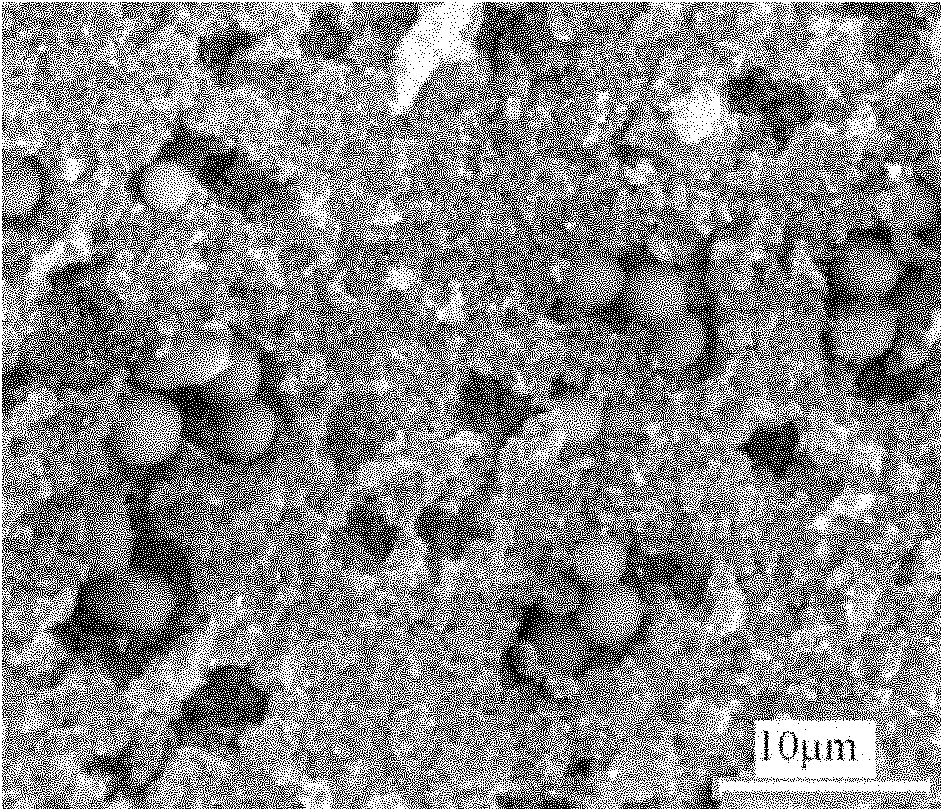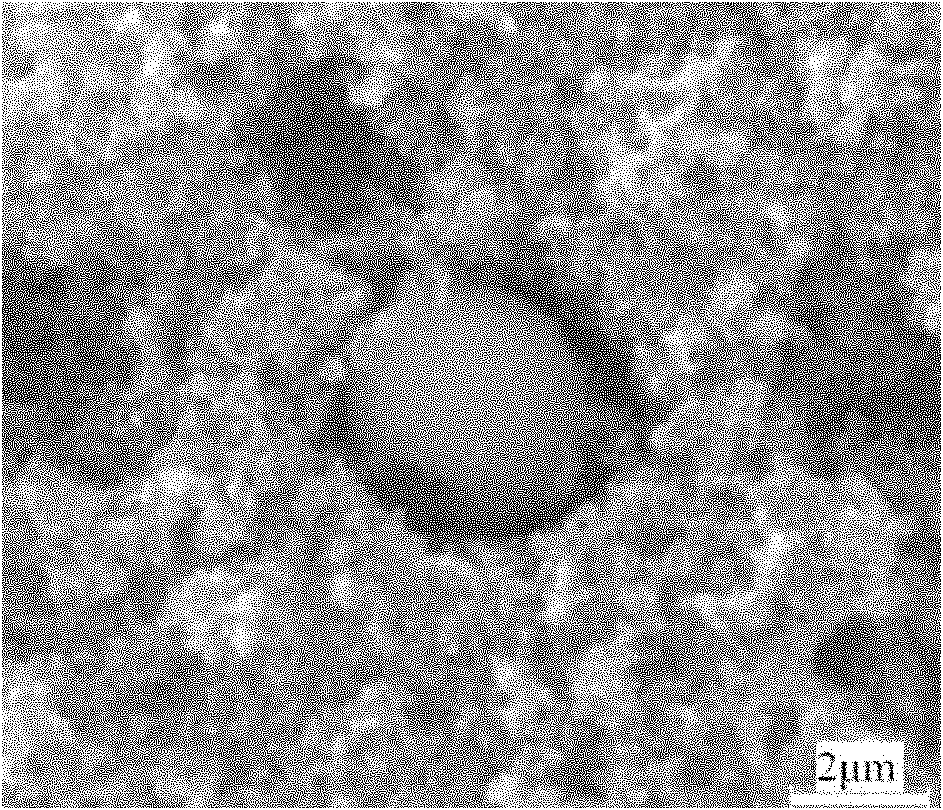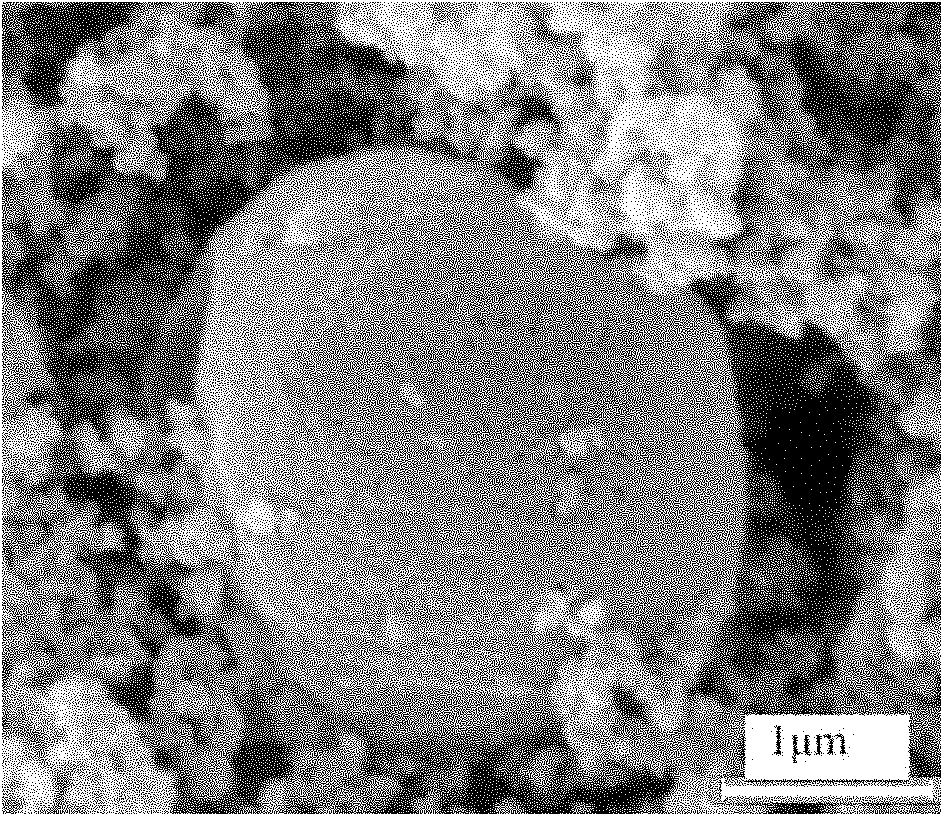Preparation method of supported binary alloy direct alcohol fuel cell catalyst with porous hollow sphere structure
A binary alloy, fuel cell technology, applied in metal/metal oxide/metal hydroxide catalysts, chemical instruments and methods, physical/chemical process catalysts, etc., can solve the problem of high catalyst preparation cost and hindered alcohol fuel transmission , Pt particle poisoning of nano-scale catalysts, etc.
- Summary
- Abstract
- Description
- Claims
- Application Information
AI Technical Summary
Problems solved by technology
Method used
Image
Examples
specific Embodiment approach 1
[0007] Embodiment 1: In this embodiment, the preparation method of binary alloy-supported porous hollow sphere structure direct alcohol fuel cell catalyst is realized according to the following steps: 1. Anionic surfactant and carrier are dissolved in polyhydric alcohol, Mechanical stirring after ultrasonic treatment to obtain a uniform mixture, the concentration of the anionic surfactant in the mixture is 0.5 to 3 times the critical micelle concentration, the carrier is XC-72 carbon black, carbon nanotubes, mesoporous carbon or carbon fiber , the anionic surfactant has stearic acid, oleic acid, lauric acid, sodium lauryl sulfate, sodium lauryl sulfate, sodium dodecylbenzenesulfonate or glycocholic acid; 20% to 60% of the total loading of the metal element in the bulk salt and the complex. Add the metal precursor salt and the complex to the above mixture in sequence to form a mixed slurry, wherein the metal precursor salt is PdCl 2 , PtCl 4 , AuCl 3 , AgNO 3 , IrCl 3 or Rh...
specific Embodiment approach 2
[0009] Embodiment 2: The difference between this embodiment and Embodiment 1 is that the polyhydric alcohol in Step 1 is ethylene glycol, propylene glycol, glycerol, 1,3-butanediol or pentaerythritol. Other steps and parameters are the same as in the first embodiment.
specific Embodiment approach 3
[0010] Embodiment 3: This embodiment differs from Embodiment 1 or Embodiment 2 in that: the concentration of the surfactant in the mixture described in step 1 is 0.5 to 3 times the critical micelle concentration. Other steps and parameters are the same as those in Embodiment 1 or Embodiment 2.
PUM
 Login to View More
Login to View More Abstract
Description
Claims
Application Information
 Login to View More
Login to View More - R&D
- Intellectual Property
- Life Sciences
- Materials
- Tech Scout
- Unparalleled Data Quality
- Higher Quality Content
- 60% Fewer Hallucinations
Browse by: Latest US Patents, China's latest patents, Technical Efficacy Thesaurus, Application Domain, Technology Topic, Popular Technical Reports.
© 2025 PatSnap. All rights reserved.Legal|Privacy policy|Modern Slavery Act Transparency Statement|Sitemap|About US| Contact US: help@patsnap.com



